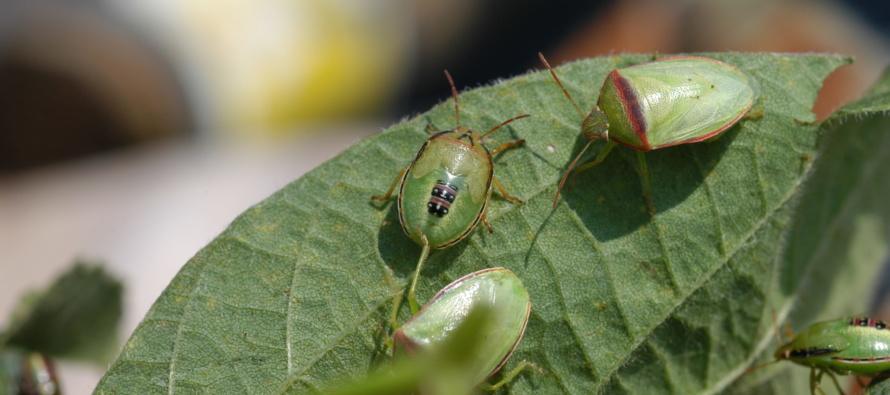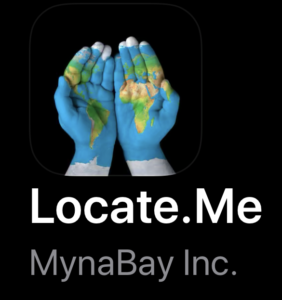Redbanded Stink Bug Survey: Week of 4/27/20

Related Articles
- 2010 Soybean And Corn Variety Trial Data 3
- Mississippi Cotton Insect Situation of 2010: A Look Back 3
- Rice Insecticidal Seed Treatment Recommendations for Mississippi in 2011 0
Latest Tweets
We have sampled enough areas at this point to feel reasonably certain that some areas will experience issues with RBSB this season. To what extent is yet to be determined. We will likely not continue the weekly surveys in weeks going forward and begin focusing on management in future newsletters. Many thanks to all who helped us this year. We work with a great group of farmers, consultants, and Ag industry reps, and we appreciate you.
*Each week we sample, we will add to the previous weeks post with updated map and new counties
This year has been unusual to say the least with the COVID-19 outbreak. During this time, worker availability has become our limiting factor. It has ultimately limited our ability to conduct as many state wide surveys with student workers at home. Thankfully, our independent consultants and local retailers have been more than willing to lend a hand. We appreciate everyone that has aided in these surveys.
As we suspected with the mild winter, redbanded stink bugs (RBSB) have been found in the state. This will be a strong indicator of the problems to come as the season progresses. Since we have not extensively surveyed, starting now, we ask that you please help us in monitoring this pest (details are located at the bottom of this post). Even with the current price of beans, it is imperative that you consider the problematic nature of this pest and determine a way to factor RBSB control into your budgets. Unfortunately, this year seems to be starting out very similar to the last few years…..wet. This will ultimately impact planting date. Planting date will be the biggest factor in determining how many insecticide applications will be required. The earlier your crop is planted, the fewer number of sprays will likely be required.
RBSB ditch bank survey results from the week of April 27, 2020 :
- Yalobusha County 1/100 Sweeps

- Grenada County 1: 6/100 Sweeps
- Grenada County 2: 7/100 Sweeps
- Grenada County 3: 1/100 Sweeps
- Montgomery County 4/100 Sweeps
- Covington County 5/100 Sweeps
- Covington County 4/100 Sweeps
*Nymphs Present
RBSB ditch bank survey results from the week of April 20, 2020 :
- Webster County 1/100 Sweeps
- Lowndes County 1: 1/100 Sweeps
- Lowndes County 2: 8/100 Sweeps
- Noxubee County 17/100 Sweeps
- Oktibbeha County 2/100 Sweeps
- Yalobusha County 4/100 Sweeps
- *Jefferson County 1/00 Sweeps
- *Madison County 11/100 Sweeps
- *Warren County: 10/100 Sweeps
*Nymphs Present
RBSB ditch bank survey results from the week of April 13, 2020 :
- Sunflower County 1: 13/100 Sweeps
- Sunflower County 1: 0/100 Sweeps
- Sunflower County 1: 0/100 Sweeps
- Bolivar County 1: 0/100 Sweeps
- Bolivar County 2: 0/100 Sweeps
- Yazoo County 1: 7/100 Sweeps
*At this time all finds were adults
RBSB ditch bank survey results from the week of April 6, 2020 :
- Leflore County 1: 8/100 Sweeps
- Leflore County 2: 24/100 Sweeps
- Carroll County: 4/100 Sweeps
- Holmes County 1: 4/100 Sweeps
- Holmes County 2: 10/100 Sweeps
- Holmes County 3: 4/100 Sweeps
- Yazoo County 1: 3/100 Sweeps
- Yazoo County 2: 4/100 Sweeps
- Madison County: 8/100 Sweeps
*At this time all finds were adults
RBSB ditch bank survey results from the week of March 30, 2020:
- Noxubee County: 0/100 Sweeps
- Copiah County: 7/100 Sweeps
- Hinds County 1: 13/100 Sweeps
- Hinds County 2: 16/100 Sweeps
- Warren County: 12/100 Sweeps
- Sharkey County 1: 1/100 Sweeps
- Sharkey County 2: 1/100 Sweeps
*At this time all finds were adults
Here’s how you can help:
When traveling the area you work, simply sweep patches of crimson or white clover on roadsides and ditch banks. Report your numbers to Angus Catchot either by text (662-418-8163) or email (acatchot@ext.msstate.edu). Each week we will post the latest survey information.
This process is very simple but please take note of the information we are requesting:
- Keep up with the number of sweeps you take at each location.
- The total number may vary depending on the size of the clover patch. That is fine.
- Keep up with numbers of Adults and Nymphs separately. Send pictures if you ID help.
- Each location should be reported in x number of adults/nymphs per x number of sweeps.
- An example report: Washington Co. DREC. 5 adults and 0 nymphs/15 sweeps.
- Record the location for each set of samples.
- If you do not have access to GPS coordinates, record county and closest town.
- Below is an app that you can download. It provides exact information on your location. If this is your preferred method of location identification, just screenshot and send with your report.





Let me tell You a sad story ! There are no comments yet, but You can be first one to comment this article.
Write a comment